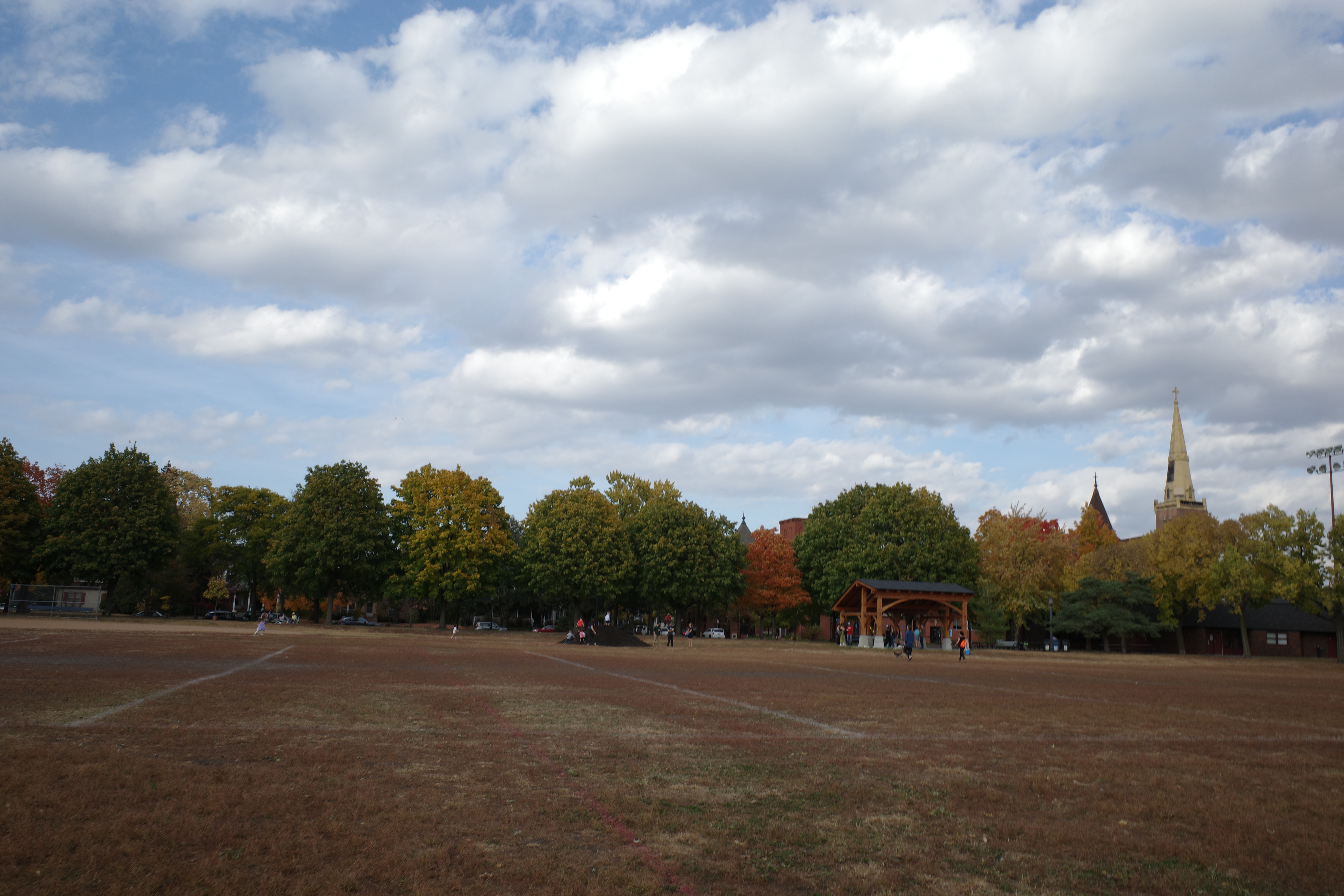Adovocating for Equitable Access to Urban Green Spaces
Urban areas in the United States are growing to now accommodate about 83% of the population. As cities grow to account for the needs of their populations, it becomes increasingly essential to consider how cities are prioritizing green spaces and urban trees. Along with the ecological benefits, urban green spaces have been shown to improve mental health, physical health, and generate a sense of community for the surrounding residents. The following map and statistical analysis show that there is a need to make urban green space more accessible for disadvantaged communities.
As demonstrated above, access to park areas varies across Minneapolis census tracts, with some tracts lacking parks entirely and others having an abundance. In order to test whether or not parks are equally available across census tracts in Minneapolis, we performed a linear regression analyzing the relationship between total park area (\(m^2\)) and HOLC grade.
lm(formula = total_park_area ~ holc_grade)
| Variable | Estimate | Std. Error | t-value | P-value |
|---|---|---|---|---|
| Intercept | 960894 | 207396 | 4.633 | 9.79e-06 *** |
| holc_grade_B | -189583 | 236679 | -0.801 | 0.42482 |
| holc_grade_C | -817086 | 242877 | -3.364 | 0.00105 ** |
| holc_grade_D | -736108 | 255695 | -2.879 | 0.00478 ** |
The linear regression model uses the park areas in census tracts of HOLC grade A as a baseline to compare to census tracts of HOLC grades B, C, and D. The results from this model show that there is no significant difference in total park area between census tracts of HOLC grades A and B since the P-value is insignificant. However, the model shows a significant decline in total park area in both census tracts of HOLC grades C and D in comparison to HOLC grade A census tracts. HOLC grade C census tracts are expected to have 817086 \(m^2\) less park area than HOLC grade A census tracts, and HOLC grade D census tracts are expected to have 736108 \(m^2\) less park area than HOLC grade A census tracts. While this model analyzes the park area across census tracts, our site visit exploration also showed that the parks in HOLC grade A neighborhoods were much more developed and attended than the parks in HOLC grade C and D neighborhoods. This prompts future investment into already existing parks in HOLC grade C and D neighborhoods.
In addition to HOLC grades, park area also has strong ties to social vulnerability. Below, we use a linear model to analyze the relationship between park space and social vulnerability (as measured by the CDC’s Social Vulnerability Index, a score given to communities based on a variety of factors related to their capacity to deal with potential environmental disaster) in Minneapolis census tracts.
lm(formula = SVI ~ park_percentage)
| Variable | Estimate | Std. Error | t-value | P-value |
|---|---|---|---|---|
| Intercept | 0.674195 | 0.046930 | 14.366 | <210^-16 ** |
| park_percentage | -0.009326 | 0.003583 | -2.603 | 0.0107 |
This model shows us that for every additional 1% of a census tract area covered by parks, its social vulnerability score (measured on a 0 to 1 percentile scale) drops by an average of 0.009. That is, if one tract has 10% more green space than another, we can expect it to score 9 percentile points better on SVI, indicating a strong relationship between a community’s access to public green spaces and its overall wellbeing.
